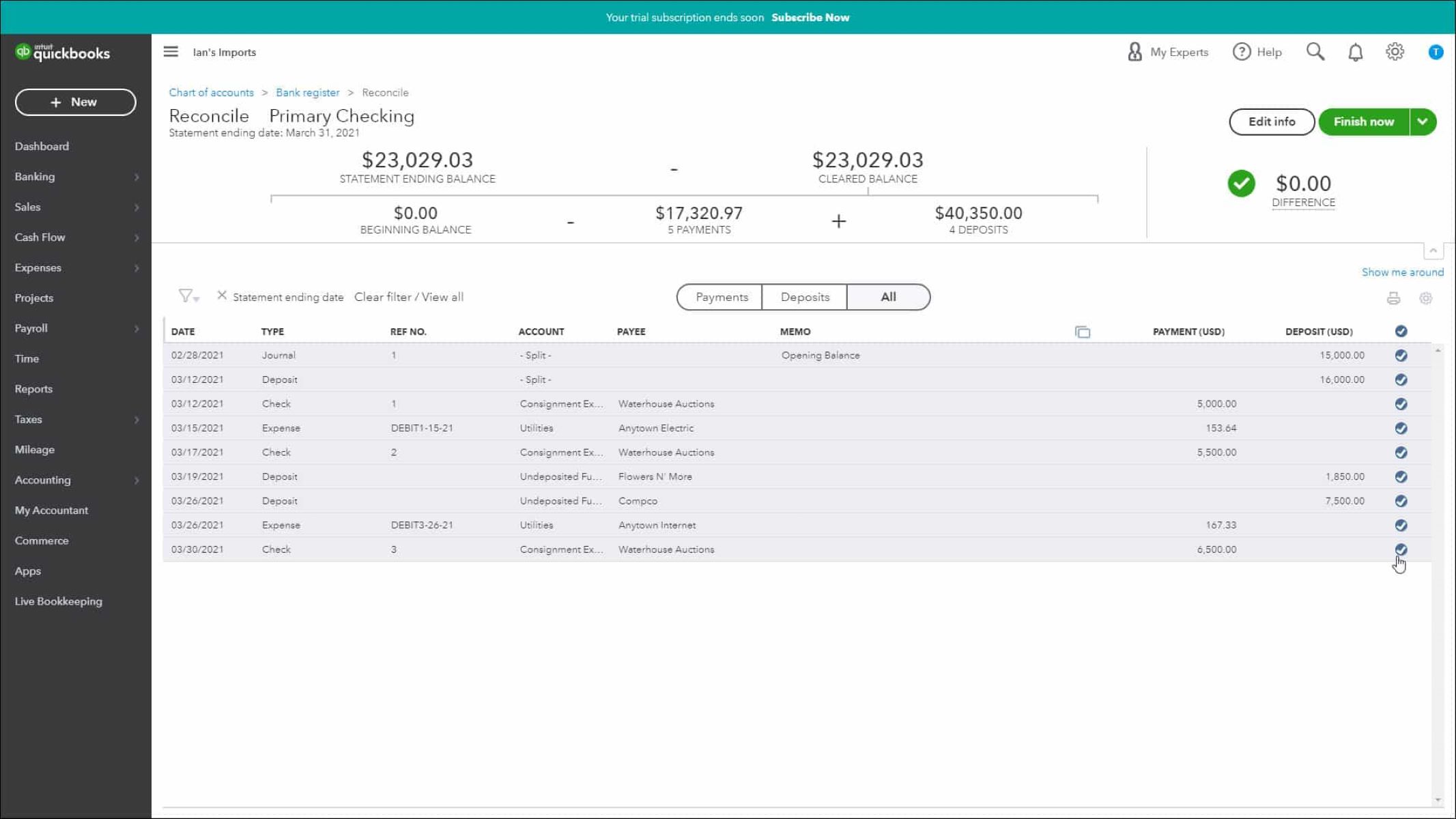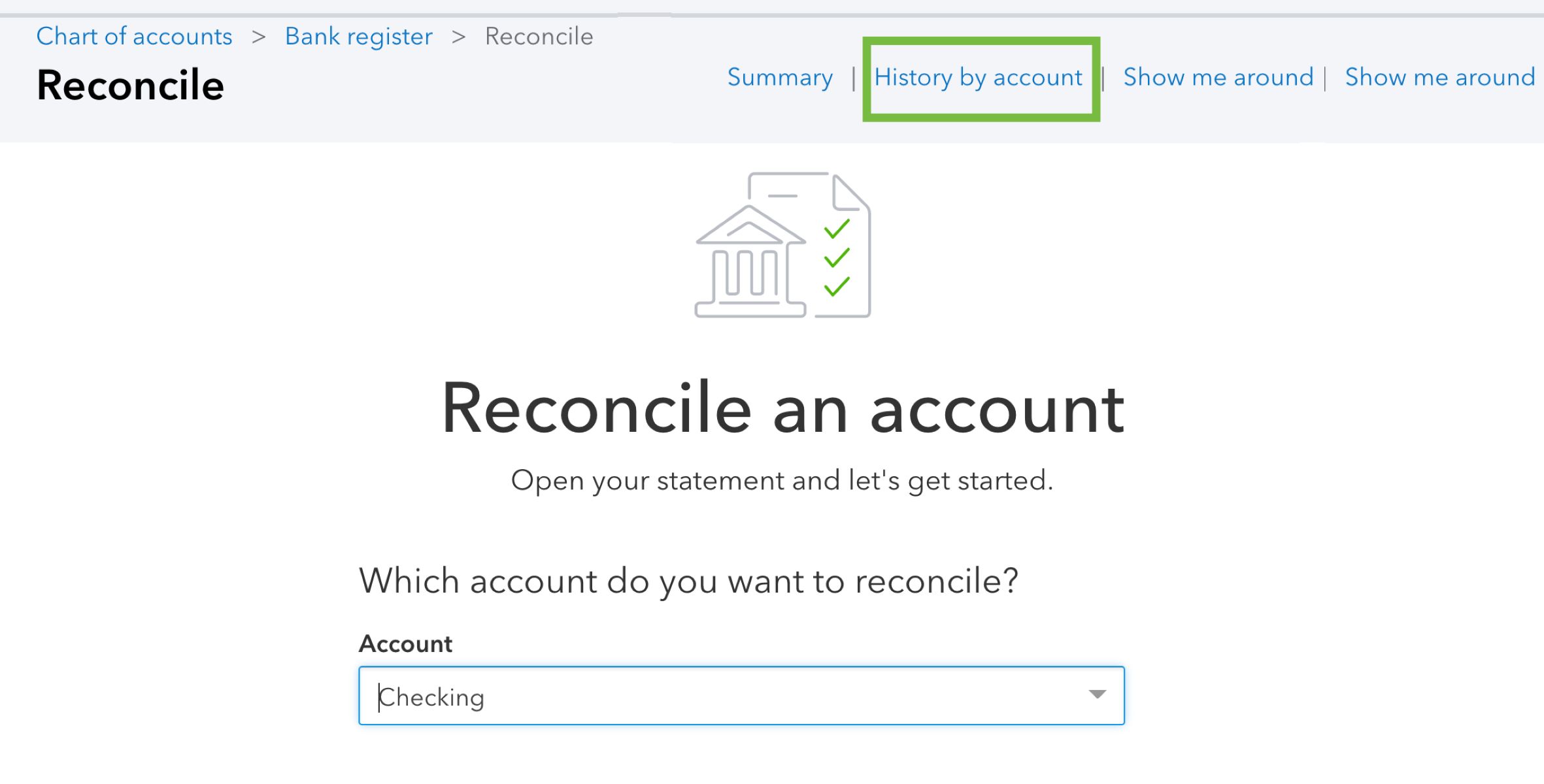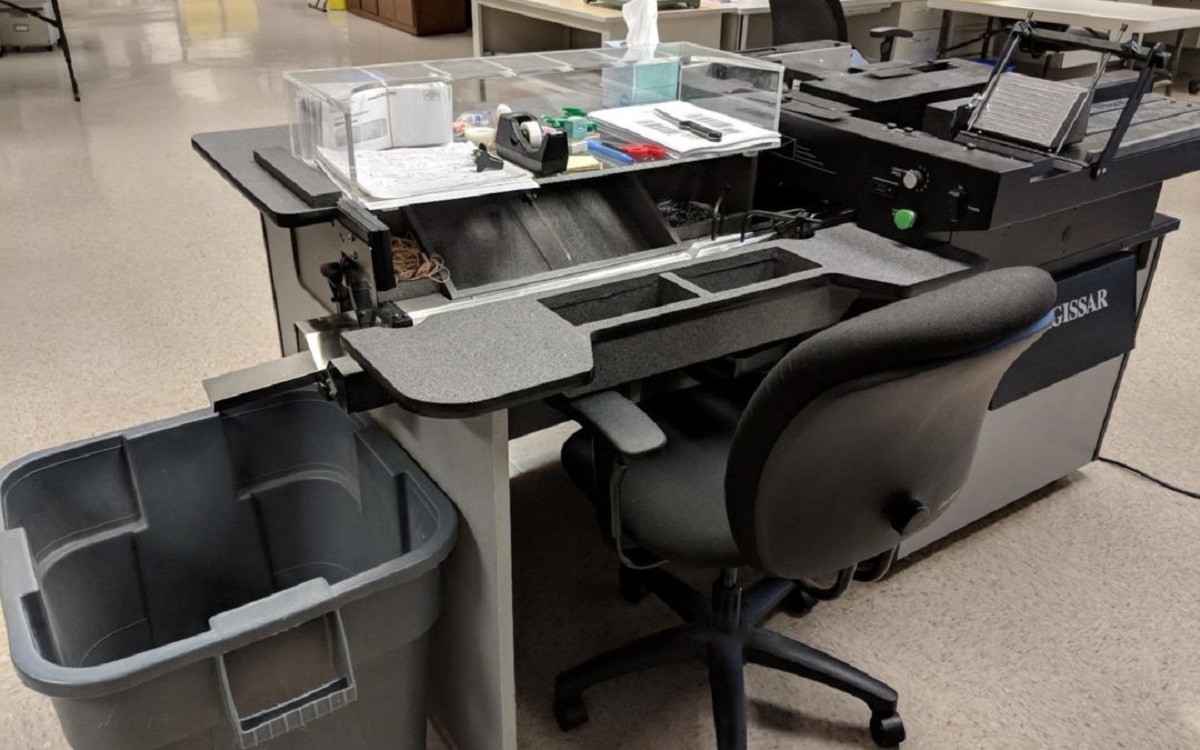Introduction
Welcome to the world of banking, where financial transactions happen at lightning speed, and accuracy is of utmost importance. In the complex realm of banking, reconciliation plays a crucial role in ensuring the integrity and reliability of financial data. But what exactly is reconciliation in banking, and why is it so essential?
Reconciliation in banking refers to the process of comparing and matching financial transactions and records to ensure consistency, accuracy, and integrity. It involves cross-checking various sources of data, such as bank statements, accounting records, and customer transactions, to identify any discrepancies and resolve them promptly.
This meticulous process is crucial for banks and financial institutions as it helps in maintaining accurate financial records, mitigating risks, and complying with regulatory requirements. It provides a comprehensive view of a bank’s financial position and helps identify any fraud, errors, or irregularities that may occur during the transaction process.
With the advancement of technology and the multitude of financial transactions happening every day, the need for reconciliation has become even more critical. Incorrect or incomplete reconciliations can have severe consequences, such as incorrect financial reporting, discrepancies in customer accounts, and even financial losses.
Moreover, reconciliation in banking also ensures that the funds deposited by customers are accurately reflected in their accounts. It helps in maintaining trust and confidence among customers and prevents any potential disputes or misunderstandings.
The process of reconciliation in banking can be time-consuming and requires expertise in handling large volumes of financial data. It involves comparing transactions, checking for errors or omissions, and resolving any discrepancies found. This process requires attention to detail, analytical skills, and a thorough understanding of banking operations and regulations.
Next, we will explore the importance of reconciliation in banking and the benefits it brings to financial institutions and their customers. So, buckle up and get ready to delve into the intricacies of reconciliation in the world of banking.
Definition of Reconciliation in Banking
In the banking industry, reconciliation refers to the process of comparing and verifying financial records to ensure accuracy and consistency. It involves checking and matching various sources of financial data, such as bank statements, transaction records, and accounting entries, to identify any discrepancies and resolve them promptly.
Reconciliation in banking goes beyond a simple comparison of numbers; it aims to ensure that all financial transactions are accurately recorded, and any inconsistencies are promptly identified and rectified. The process involves comparing bank statements with internal accounting records, customer transaction details, and other relevant financial documents to establish a complete and accurate representation of the bank’s financial position.
Through reconciliation, banks can identify errors, omissions, or fraudulent activities that may have occurred during the transaction process. This helps to maintain the integrity of financial information and ensures that financial reports accurately reflect the bank’s financial health.
The reconciliation process in banking involves several steps, including verifying the accuracy of transaction details, identifying and resolving discrepancies, and documenting the findings for auditing and compliance purposes. It requires a meticulous approach, attention to detail, and comprehensive knowledge of banking operations and regulations.
Typically, the reconciliation process begins by comparing the bank’s recorded transactions, such as cash deposits, withdrawals, and transfers, with the corresponding entries in customers’ accounts. Any discrepancies, such as missing transactions or incorrect amounts, are flagged for further investigation and resolution.
In addition to internal reconciliation, banks also reconcile their records with external sources, such as credit card networks, clearinghouses, and other financial institutions. This ensures that all transactions are accurately captured and recorded, reducing the risk of errors and discrepancies.
Overall, reconciliation in banking is a critical process that ensures the accuracy, integrity, and reliability of financial data. By reconciling financial records, banks can detect and correct errors, identify potential fraudulent activities, and maintain trust and confidence among customers. It is a fundamental practice that not only helps banks comply with regulatory requirements but also safeguards the financial well-being of the institution and its customers.
Importance of Reconciliation in Banking
Reconciliation plays a crucial role in the banking industry, providing numerous benefits to both financial institutions and their customers. Let’s explore why reconciliation is of utmost importance in banking operations.
1. Accuracy and Integrity of Financial Data: Reconciliation ensures that financial data is accurate and consistent across various sources. By comparing and matching records, banks can identify any discrepancies, errors, or fraudulent activities. This helps maintain the integrity of financial information and ensures that reports and statements accurately represent the bank’s financial position.
2. Risk Mitigation: Banks face numerous risks, such as errors, fraud, and operational issues. Reconciliation acts as a control mechanism to mitigate these risks by identifying and resolving discrepancies promptly. It helps in early detection of errors or fraudulent activities, reducing the potential financial and reputational impact on the bank.
3. Compliance with Regulatory Requirements: Financial institutions are subject to various regulations and reporting standards. Reconciliation ensures compliance with these requirements by providing accurate and auditable financial records. It helps in meeting regulatory obligations and facilitates smooth audits and examinations.
4. Customer Trust and Confidence: Reconciliation is essential in maintaining trust and confidence among customers. By ensuring that the funds deposited by customers are accurately reflected in their accounts, banks can prevent disputes and misunderstandings. Customers can trust that their transactions are accurately recorded and their financial information is secure.
5. Prevention of Financial Losses: Incorrect or incomplete reconciliations can lead to financial losses for banks. Discrepancies in accounts or inaccurate financial reporting can result in incorrect transactions, losses, or even legal ramifications. Reconciliation helps prevent such financial losses by identifying and resolving discrepancies before they escalate into major issues.
6. Improved Operational Efficiency: Reconciliation processes enable banks to streamline their operations and improve efficiency. By automating repetitive tasks and leveraging reconciliation software, banks can save time, reduce manual errors, and reallocate resources to more value-added activities.
7. Effective Fraud Detection and Prevention: Reconciliation plays a vital role in detecting and preventing fraudulent activities. By cross-checking and verifying transactions, banks can identify suspicious patterns or unauthorized activities. This enables them to take timely action to prevent financial losses and maintain the security of customer accounts.
8. Enhanced Decision-Making: Accurate financial data obtained through reconciliation is vital for informed decision-making by bank management and stakeholders. It provides a clear picture of the bank’s financial health and helps in developing effective strategies, allocating resources, and identifying areas for improvement.
Overall, reconciliation is an indispensable process in the banking industry. It ensures accurate financial data, mitigates risks, complies with regulations, maintains customer trust, prevents financial losses, improves efficiency, detects fraud, and enables informed decision-making. By incorporating robust reconciliation practices, banks can establish a solid foundation for financial stability, growth, and long-term success.
Process of Reconciliation in Banking
The process of reconciliation in banking involves several steps aimed at comparing, verifying, and resolving discrepancies in financial records. Let’s take a closer look at the typical process of reconciliation in the banking industry.
1. Gathering and Organizing Data: The first step in the reconciliation process is to gather and organize relevant financial records. This includes bank statements, transaction data, customer records, and any other sources of financial information.
2. Identifying Reconciliation Items: Once the data is collected, the next step is to identify the items that require reconciliation. This involves comparing transaction details in bank statements with internal accounting records and customer transaction histories.
3. Matching and Verifying Transactions: The identified reconciliation items are then matched and verified against the corresponding entries in the bank’s records. This includes checking for accurate transaction amounts, dates, and other relevant details.
4. Investigating Discrepancies: If any discrepancies are found during the matching process, further investigation is carried out to determine the cause. This may involve reviewing additional documents, seeking clarification from relevant parties, or examining transaction logs.
5. Resolving Discrepancies: Once the cause of the discrepancy is identified, the next step is to take necessary actions to resolve it. This may include correcting erroneous entries, updating transaction records, or contacting customers to rectify any errors or discrepancies.
6. Documenting Actions Taken: It is crucial to document all the actions taken during the reconciliation process. This documentation serves as an audit trail and helps in compliance with regulatory requirements as well as internal governance policies.
7. Performing Reconciliation Controls: Banks often have internal controls and procedures in place to ensure the accuracy and completeness of the reconciliation process. These controls may include periodic review and approval of reconciliations, segregation of duties, and reconciliation software validations.
8. Periodic and Reconciliations: Reconciliation is an ongoing process in banking. Regular reconciliations are performed daily, weekly, or monthly to ensure the timely identification and resolution of any discrepancies. This helps in maintaining accurate and up-to-date financial records.
9. Review and Reporting: After the reconciliation process is completed, a review is conducted to ensure that all discrepancies have been resolved accurately. A reconciliation report is generated, highlighting the findings, actions taken, and any remaining outstanding items.
It is important to note that the reconciliation process may vary slightly depending on the specific requirements and internal procedures of each bank. Some banks may also leverage automation and reconciliation software to streamline the process and enhance efficiency.
By following a well-defined and comprehensive reconciliation process, banks can ensure the accuracy and integrity of financial records, promptly resolve discrepancies, and maintain regulatory compliance. This ultimately contributes to a robust financial system and enhances customer trust in the banking industry.
Benefits of Reconciliation in Banking
Reconciliation in banking offers numerous benefits to financial institutions, customers, and the overall banking ecosystem. Let’s explore the key advantages that arise from implementing effective reconciliation practices.
1. Accurate Financial Reporting: Reconciliation ensures the accuracy and integrity of financial data, enabling banks to create reliable financial reports and statements. This instills trust among stakeholders and assists in making informed decisions based on accurate financial information.
2. Risk Mitigation: By reconciling financial records, banks can identify and rectify errors, omissions, and discrepancies. This helps mitigate the risks associated with inaccurate or incomplete financial data, minimizing the potential for financial losses, incorrect reporting, and regulatory non-compliance.
3. Fraud Detection and Prevention: Reconciliation plays a crucial role in detecting and preventing fraudulent activities. By cross-checking and verifying transaction details, banks can identify suspicious patterns, unauthorized transactions, and potential fraud. Early detection allows for prompt action to prevent financial losses and safeguard customer accounts.
4. Regulatory Compliance: Reconciliation helps banks comply with regulatory requirements and reporting standards. Accurate and auditable financial records facilitate smooth audits and examinations, reducing the risk of penalties and reputational damage associated with non-compliance.
5. Customer Trust and Satisfaction: Accurate reconciliation ensures that customer account balances reflect their actual transactions. This builds trust and confidence among customers, as they can rely on accurate records of their financial activities and funds. It also minimizes disputes and enhances the overall customer experience.
6. Operational Efficiency: By automating the reconciliation process and leveraging reconciliation software, banks can streamline operations and improve efficiency. Automation reduces manual errors, saves time, and allows resources to be allocated to more value-added tasks, enhancing overall operational efficiency.
7. Timely Error Resolution: Reconciliation facilitates timely identification and resolution of errors or discrepancies. By conducting regular reconciliations, banks can quickly identify any discrepancies and take prompt actions to rectify them. This minimizes the impact of errors and ensures accurate financial records.
8. Enhanced Decision-Making: Accurate financial data obtained through reconciliation provides banks with the information needed for informed decision-making. It allows management to assess the bank’s financial health, identify areas for improvement, and allocate resources effectively to achieve financial goals.
9. Improved Auditability and Governance: Reconciliation processes and documentation enhance auditability and governance in banks. Detailed documentation of the reconciliation process provides transparency, allowing auditors and regulators to easily review and validate financial records and compliance with internal controls.
Overall, the benefits of reconciliation in banking extend beyond maintaining accurate financial records. It encompasses risk mitigation, fraud detection, regulatory compliance, customer trust, operational efficiency, informed decision-making, and improved auditability. By prioritizing reconciliation, banks can strengthen their financial systems, enhance customer satisfaction, and foster a more secure and reliable banking environment.
Challenges in Reconciliation in Banking
While reconciliation is a vital process in banking, it is not without its challenges. The complex nature of financial transactions and the vast amount of data involved can give rise to various challenges that banks must navigate. Let’s explore some of the common challenges faced in the reconciliation process in banking.
1. High Volume of Transactions: Banks handle a significant volume of transactions on a daily basis, making it challenging to reconcile large amounts of data accurately and efficiently. Managing this volume requires robust systems and processes that can handle the sheer scale of transactions.
2. Multiple Data Sources: Reconciliation involves gathering data from various sources, such as bank statements, accounting records, customer transactions, and external sources. Aligning and reconciling data from these disparate sources can be complex and time-consuming.
3. Data Quality and Consistency: Inaccurate or inconsistent data can be a significant challenge in the reconciliation process. Data integrity issues, such as missing or incorrect transaction details, can lead to discrepancies and require extensive effort to identify and rectify.
4. Manual Effort and Human Error: In some instances, reconciliation processes are still performed manually, relying on human effort and judgment. This can introduce the potential for human error and inconsistencies, particularly when handling large volumes of data.
5. Complex Transaction Flows: Financial institutions deal with a variety of complex transaction types, including cross-border transactions, multiple currency conversions, and intricate payment flows. These complexities can complicate the reconciliation process and make it more challenging to ensure accurate matching.
6. Time Sensitivity: Reconciliation must be performed within specific timeframes to ensure the timely detection and resolution of discrepancies. Banks need to balance the need for speed with accuracy, often requiring efficient systems and processes to meet strict deadlines.
7. System and Technology Limitations: Legacy systems, outdated technology, and disparate software applications can pose challenges to reconciliation. Integrating different systems and ensuring seamless data flow can be complex, causing delays and hindering the reconciliation process.
8. Regulatory and Compliance Complexity: Banks must comply with numerous regulations related to financial reporting, data protection, and anti-money laundering. Reconciliation must align with these regulations, which can add complexity and additional steps to the process.
9. Manual Investigation and Resolution: Investigating and resolving discrepancies can be a time-consuming and labor-intensive process. It may require collaboration between various stakeholders and manual investigation to identify the root cause and rectify the discrepancies.
Despite these challenges, banks can overcome them through technology adoption, process improvements, and automation. Implementing robust reconciliation systems, leveraging advanced software, and enhancing data quality controls can help banks address these challenges and streamline the reconciliation process for enhanced accuracy and efficiency.
Reconciliation Tools and Software in Banking
Reconciliation in banking can be significantly enhanced with the use of dedicated tools and software. These tools automate and streamline the reconciliation process, providing increased accuracy, efficiency, and productivity. Let’s explore some of the commonly used reconciliation tools and software in the banking industry.
1. Reconciliation Software: Dedicated reconciliation software is specifically designed to handle the complexities of the banking industry. It automates the reconciliation process, enabling efficient data matching, identification of discrepancies, and resolution. Reconciliation software helps reduce manual effort, improves accuracy, and provides real-time visibility of the reconciliation status.
2. Data Integration Tools: In banking, data integration tools play a crucial role in reconciling data from various sources. They enable the seamless integration of data from bank systems, accounting software, and other relevant sources. These tools ensure the consolidation of accurate and up-to-date data, facilitating efficient reconciliation.
3. Exception Management Systems: Exception management systems help in identifying and managing exceptions or discrepancies in the reconciliation process. These systems automatically flag and prioritize exceptions, enabling efficient resolution and minimizing delays in the reconciliation process. They also provide comprehensive reporting and tracking of exception handling.
4. Matching and Validation Tools: Matching and validation tools are essential for reconciling transactional data. They use sophisticated algorithms to match transactions based on various parameters such as amount, date, and reference numbers. These tools increase reconciliation efficiency and accuracy, helping to identify and resolve discrepancies promptly.
5. Reporting and Analytics Tools: Reporting and analytics tools provide valuable insights into the reconciliation process. They generate comprehensive reports and visualizations, enabling stakeholders to track reconciliation status, identify trends, and make data-driven decisions. These tools enhance transparency, auditability, and governance in the reconciliation process.
6. Cash Management Systems: Cash management systems help banks reconcile cash balances and manage liquidity. These systems automate the matching of cash transactions with bank statements and provide real-time balance updates. Cash management systems enhance cash visibility, optimize liquidity management, and improve accuracy in cash reconciliation.
7. Data Quality Tools: Data quality tools assess data accuracy, completeness, and consistency. They help banks identify and correct data errors, duplicates, and anomalies that can impact the reconciliation process. Data quality tools improve the overall quality of financial data, ensuring reliable and accurate reconciliation results.
8. Risk and Compliance Tools: Risk and compliance tools assist in ensuring adherence to regulatory requirements and internal control policies. They help banks monitor and manage compliance risks associated with reconciliation processes. These tools provide alerts for potential compliance breaches, enabling proactive risk mitigation and ensuring regulatory compliance.
Integration of these reconciliation tools and software into banking operations can provide significant benefits, including improved efficiency, accuracy, and compliance. By automating manual tasks, reducing errors, and increasing operational visibility, reconciliation tools empower banks to streamline their processes, enhance customer service, and optimize their financial operations.
Best Practices for Reconciliation in Banking
Reconciliation is a critical process in banking that requires careful attention to detail and adherence to best practices. By following these best practices, banks can optimize the reconciliation process, improve accuracy, and ensure compliance. Let’s explore some of the key best practices for reconciliation in banking.
1. Establish Clear Reconciliation Policies and Procedures: Banks should have well-defined reconciliation policies and procedures in place. These documents should outline the roles and responsibilities of individuals involved in the process, specify timelines, and provide guidelines on handling discrepancies and exceptions.
2. Segregation of Duties: To ensure proper checks and balances, banks should implement segregation of duties in the reconciliation process. This includes separate individuals responsible for initiating, reviewing, and approving reconciliations to mitigate the risk of errors or fraudulent activities.
3. Regular and Timely Reconciliation: Reconciliations should be performed at regular intervals (e.g., daily, weekly, or monthly) to ensure timely identification and resolution of discrepancies. Timely reconciliations help reduce the risk of errors going undetected and ensure accurate financial records.
4. Automate the Reconciliation Process: Leveraging technology and automation tools for reconciliation can significantly enhance efficiency and accuracy. Banking software and reconciliation tools can automate data matching, exception handling, and reporting, minimizing the reliance on manual processes and reducing the risk of human error.
5. Ensure Data Accuracy and Integrity: Data quality is crucial for effective reconciliation. Banks should implement robust data controls, perform regular data validations, and ensure the accuracy and integrity of financial data. This includes maintaining a reliable data source, verifying transaction details, and promptly addressing any data quality issues that may arise.
6. Implement Exception Management Strategies: Effective exception management is essential for timely resolution of discrepancies. Banks should establish clear processes for identifying, prioritizing, and handling exceptions. This includes setting up exception management systems, assigning responsibilities, and establishing escalation procedures for unresolved exceptions.
7. Regular Internal and External Audits: Regular internal and external audits play a vital role in ensuring the effectiveness of the reconciliation process. Banks should conduct periodic audits to evaluate compliance with reconciliation policies, identify process gaps, and validate the accuracy and completeness of reconciliations.
8. Continuous Monitoring and Process Improvement: Banks should continuously monitor the reconciliation process and analyze reconciliation metrics to identify areas for improvement. This involves analyzing reconciliation timeframes, exception volumes, and error rates to implement corrective actions and enhance the efficiency and effectiveness of the process.
9. Training and Skill Development: Providing comprehensive training and ongoing skill development to staff involved in the reconciliation process is crucial. Proper training ensures that individuals have the necessary knowledge and skills to perform their roles effectively, minimizing errors and promoting adherence to best practices.
By implementing these best practices, banks can enhance the accuracy, efficiency, and compliance of the reconciliation process. These practices help mitigate risks, improve data integrity, streamline operations, and maintain the trust and confidence of both customers and stakeholders.
Conclusion
Reconciliation plays a vital role in the banking industry, ensuring the accuracy, integrity, and reliability of financial data. It helps financial institutions maintain accurate financial records, mitigate risks, comply with regulatory requirements, and build trust among customers. The process of reconciliation involves gathering and organizing data, identifying discrepancies, investigating and resolving issues, and documenting actions taken. While reconciliation in banking poses challenges such as high transaction volumes, multiple data sources, and complex transaction flows, these challenges can be overcome through the use of reconciliation tools and software, adherence to best practices, and continuous process improvement.
By implementing effective reconciliation practices, banks can reap numerous benefits. Accurate financial reporting allows stakeholders to make informed decisions based on reliable data, while risk mitigation safeguards against errors, fraud, and financial losses. Regulatory compliance ensures adherence to regulations and reporting standards, boosting the bank’s reputation and trustworthiness. Enhanced customer trust and satisfaction come from accurate account reconciliation, preventing disputes and ensuring the security of customer funds. Furthermore, reconciliation promotes operational efficiency, fraud detection and prevention, and improved decision-making through timely error resolution, automation, and comprehensive reporting.
In conclusion, reconciliation in banking is a critical process that should be carefully managed and prioritized. By embracing technology, following best practices, and fostering a culture of continuous improvement, banks can optimize the reconciliation process, meet regulatory requirements, and deliver accurate financial information to stakeholders. By doing so, financial institutions can maintain trust, mitigate risks, and thrive in an increasingly complex and dynamic banking landscape.

























